We can anticipate that face masks will continue to be a part of our everyday life as COVID-19 lingers in our communities. Every public place, from a doctor’s office, to the supermarket, to an outdoor dining experience, will require you to wear a mask to prevent the spread of virus.
COVID-19 can be spread through respiratory droplets when an infected person speaks, sings, coughs or sneezes. Once released, the respiratory droplets can travel thought the air about 6 feet and infect someone. Everyone can help prevent the spread of COVID-19 by wearing a mask the right way.
But, many people out there simply don’t have a ton of experience wearing a mask and may be wearing them incorrectly. To help, we’ve put together an easy guide on how to wear a mask correctly.
Just as important as knowing how to wear a mask correctly, everyone should understand some of the common mistakes to avoid. Here are five common mask mistakes we’re seeing:
Now that the Center for Disease Control and Prevention recommends face masks, and some states are even mandating them, you'll want to wear yours properly, so it can protect you and others from COVID-19. Follow this expert advice to avoid making the most common mistakes when wearing face masks.
1. You're Cross-Contaminating
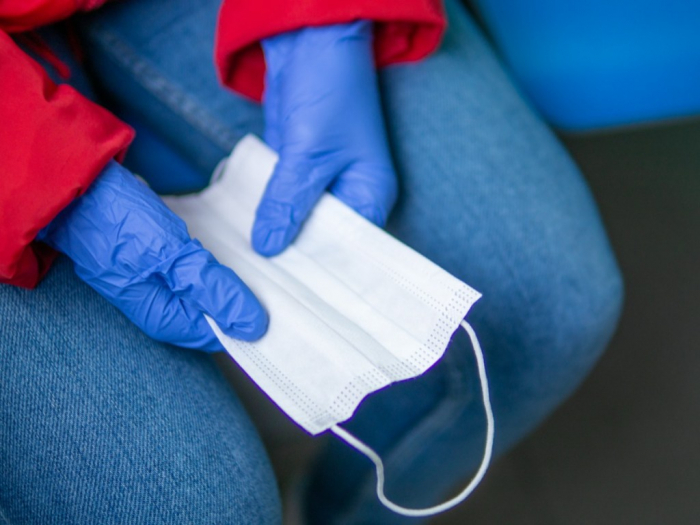
Shutterstock
"Once you wear a mask once, it's contaminated by whatever. If you take the mask off and sit it on another surface, that surface is now contaminated," says Geoffrey Mount Varner, MD, MPH, FACEP, a Maryland-based emergency medicine physician.
The Rx: "It's best to use one-use masks and once they are taken off, dispose of them," says Mount Varner. "If you use a cloth or hand-made mask, it needs to be washed and sanitized between wears."
2. You're Choosing the Wrong One for You
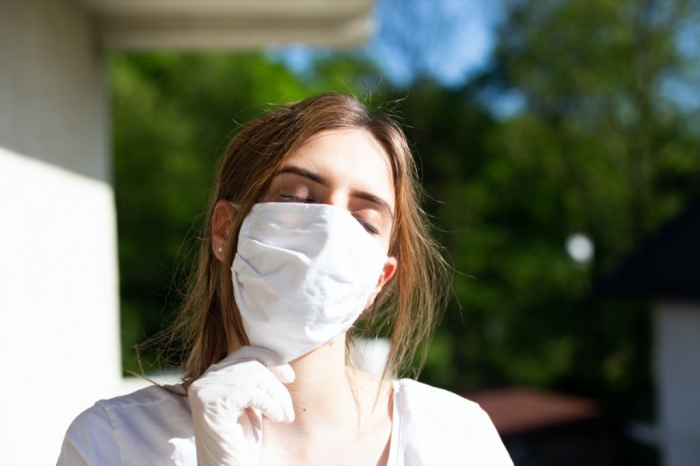
Shutterstock
"When choosing a mask, experts say focus on the fabric, fit and breathability," reports NPR. "How well a mask protects is a function of both what it's made of and how well it seals to your face. But if you can't breathe well through it, then you're less likely to keep it on."
The Rx: "The tightness of the weave is really important. That's the first thing I would ask people to look into," Supratik Guha, a professor of molecular engineering at the University of Chicago, tells NPR, which adds: "To check your fabric, hold it up to a light: If you can easily see the outline of the individual fibers, it's not going to make a great filter. Researchers say a tight-weave 100% cotton is a good bet."
3. You're Touching the Mask With Dirty Hands

Shutterstock
"If you contaminate your mask even from the outside, you can get easily infected," says physician Dimitar Marinov, MD, Ph.D.
"Taking off your face mask and then reapplying it with contaminated hands can move the bacteria or virus directly into the breathable area," says Jared Heathman, MD, a Texas-based psychiatrist.
The Rx: Make sure your hands are clean before adjusting the mask. It's best to avoid touching your face in general.
4. You're Wearing the Same Mask All Day
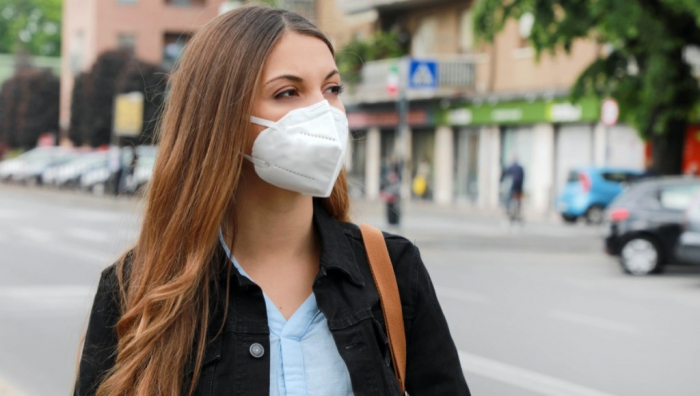
Shutterstock
"A mask should be changed or disinfected as often as every 2 hours, otherwise viral particles can accumulate on it and you are more likely to breathe them in," says Marinov.
5. You're Not Fully Covered
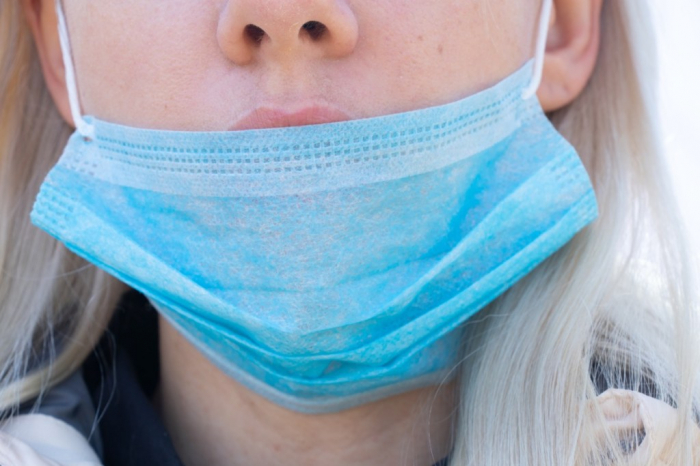
Shutterstock
"I see many people wearing their masks below the nose," says Marinov. "While it will still protect others if you are coughing or sneezing, it will not protect you from COVID-19 if someone else nearby is infected and coughs."
The Rx: Once the mask is fitted properly on the nose, it should be extended so that it fits right under your chin, says Angela Abernathy, a New York City-based dentist. "This is to ensure maximum coverage."
Adds Heathman: "The purpose is to breathe through the mask, not around the mask."
6. You're Putting It on Too Late
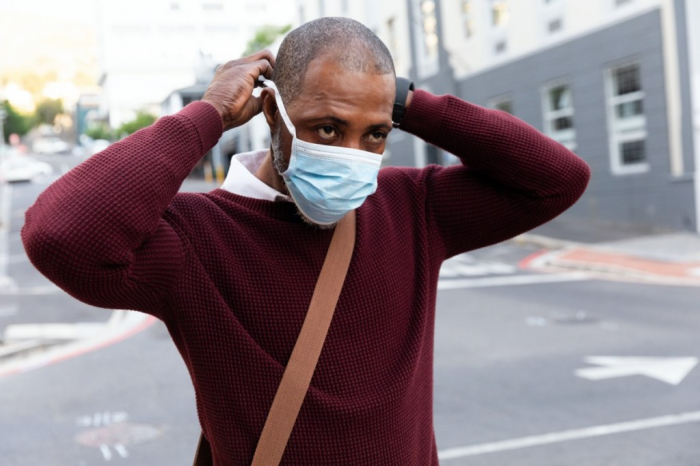
Shutterstock
Without the mask, you're susceptible to inhaling the particles in the air. "You must put it on ahead of entering an area of risk," says Rafael Lugo, a general surgeon and owner/CEO at Lugo Surgical Group in The Woodlands, Texas.
7. You're Too Trusting
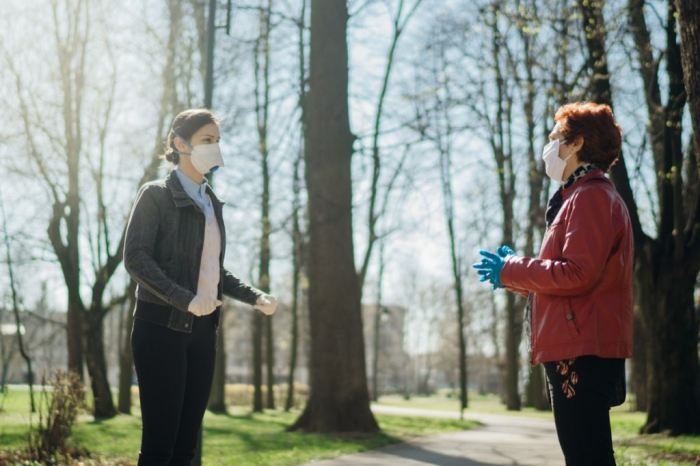
Shutterstock
You may think "the mask is 100 percent reliable," says Lugo. Not so. "It is meant to decrease the risk. Ultimately, social distancing is king."
"A surgical mask is not designed to provide a barrier between your respiratory system and all viruses and bacteria," says Leann Poston, MD, a physician with Invigor Medical in New York City. "Social distancing helps protect you from viral particles sneezed and coughed into the air by people who may not know that they are sick yet."
8. You're Spraying It With Chemicals
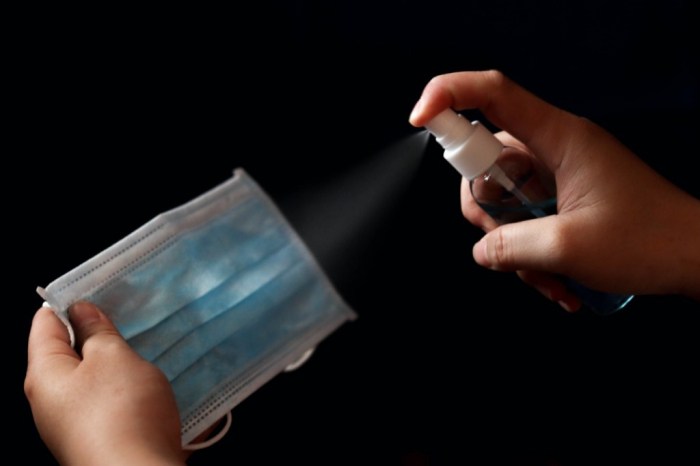
Shutterstock
"Applying any chemical like Lysol to the mask that makes it wet is bad," says Lugo. "You can spray it to sanitize lightly, and then put it in a bag. Do not saturate it."
9. You're Getting the Mask Wet
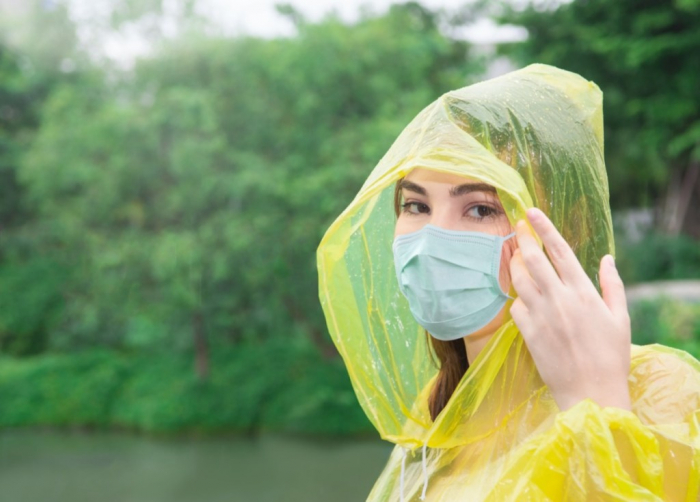
Shutterstock
"Once the mask becomes wet, it becomes less effective and needs to be changed to a dry one," says Abernathy. Avoid touching the mask with your tongue. "Touching the mask with your tongue makes it wet and more porous," advises Lugo. "You want the mask to stay dry."
10. You're Wearing It Wrong
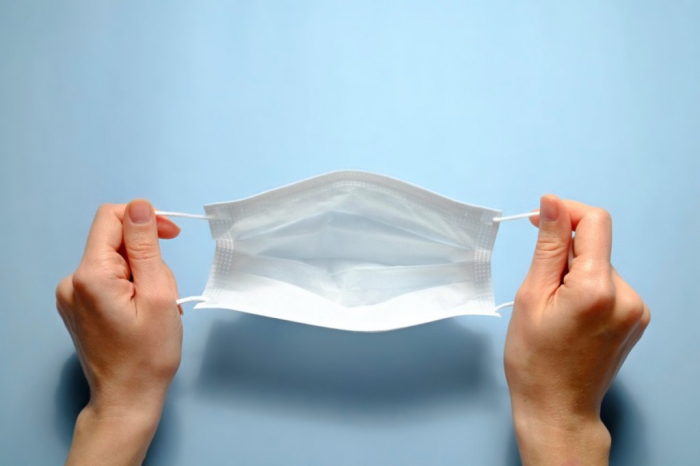
Shutterstock
"Masks have a front (that is usually colored, textured or has the brand name) and a back (that is usually white and more cotton-like)," says Abernathy. "The back side should be touching your face. It is designed this way so that particles are properly filtered."
11. You Think All Masks Are the Same
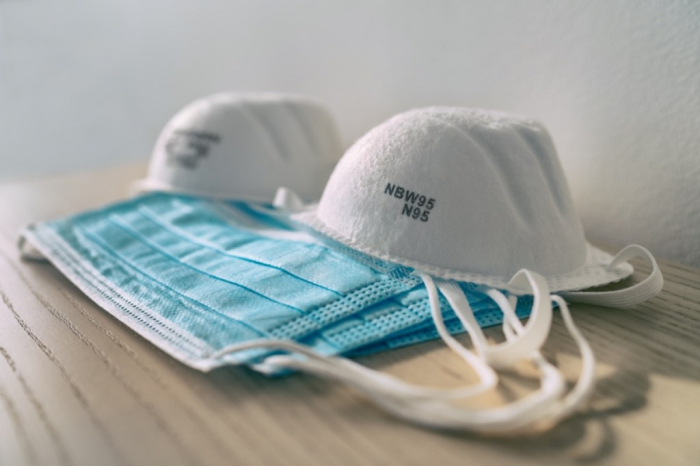
Shutterstock
Different masks have different uses. "An N95 mask filters out 95% of bacteria and viruses if they are correctly fitted to your face," says Poston. This is what healthcare workers are using to better protect themselves when caring for sick patients. "A surgical mask is designed to contain your droplets to help protect those around you."
12. You're Taking it Off Wrong
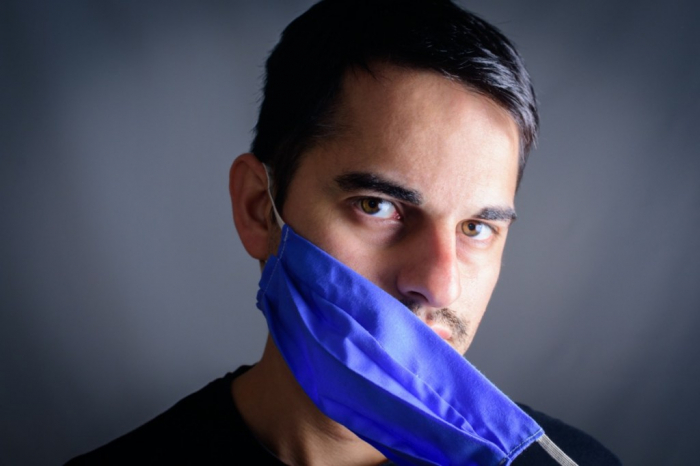
Shutterstock
When you're done wearing the mask for the day, there's a chance you could contaminate yourself taking it off. The bacteria on your mask could get on your hands, and then it would spread.
The Rx: Wash your hands before taking off the mask. Take it off my unlooping it from your ears first and then either throw it out (if it's a one time use) or keep it in its special place.
13.You're Wearing the Wrong Size

Shutterstock
If the mask you're wearing doesn't fit, it's not as effective. If it's too small, you're either leaving your nose or chin exposed. Virus particles can get in through the side openings if it's too loose. The mask should be snug against your face! This goes for kid masks as well.
14. You're Putting it on Wrong
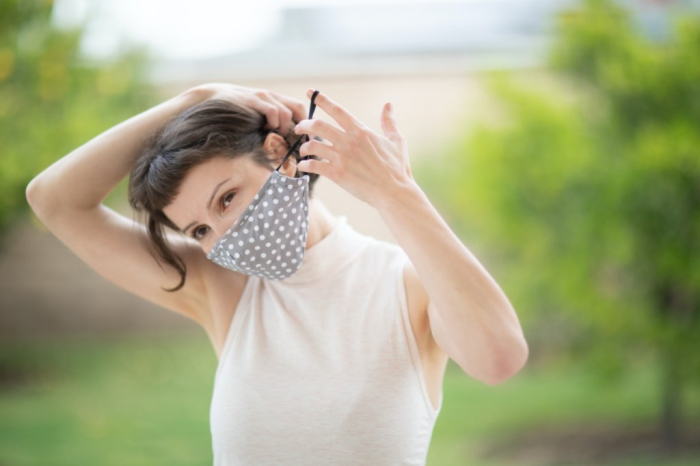
Shutterstock
Your hands should be clean before you originally put the mask on. If not, you get the participles from your hands on the previously sterile mask. For example, your fingers can touch and contaminate the inside part of the mask.
15. You're Cleaning it Wrong

Shutterstock
If you use a cloth mask, not washing it is the same as wearing a contaminated mask. A washing machine with the hot water setting on, using your normal detergent should be sufficient for cleaning it. Once clean, the mask should be thoroughly dried, on a clothesline or dryer.
16.You're No Longer Social Distancing
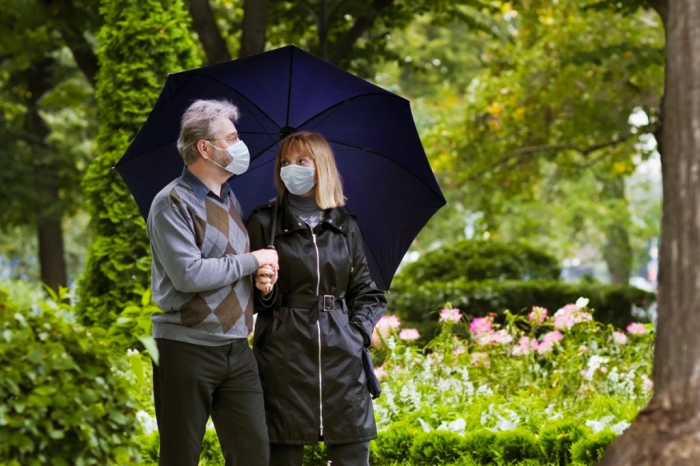
Shutterstock
You should wear a mask when you go outside, but you should still only go outside for essential services—like groceries or work. Wearing a mask might make you more likely to go outside for social reasons, as you feel safer, but self-isolating is still safer.
17.You're Wearing One When You Shouldn't
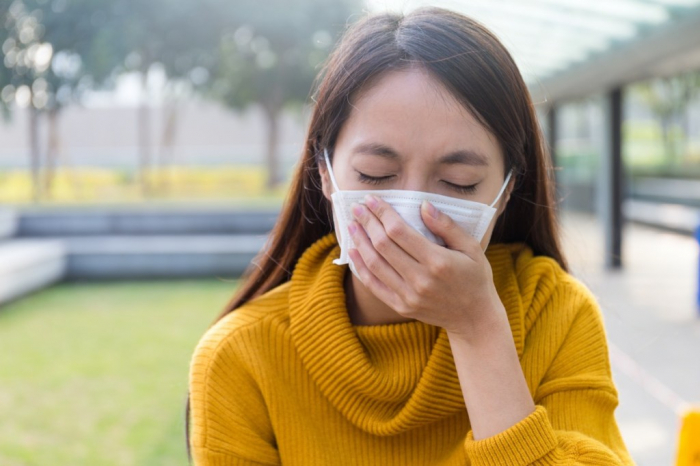
Shutterstock
Says the CDC: "Cloth face coverings should not be worn by:
Children younger than 2 years old
Anyone who has trouble breathing
Anyone who is unconscious, incapacitated, or otherwise unable to remove the cloth face covering without assistance"
An original article was published on ETNT HEALTH.
More about: mask
















































